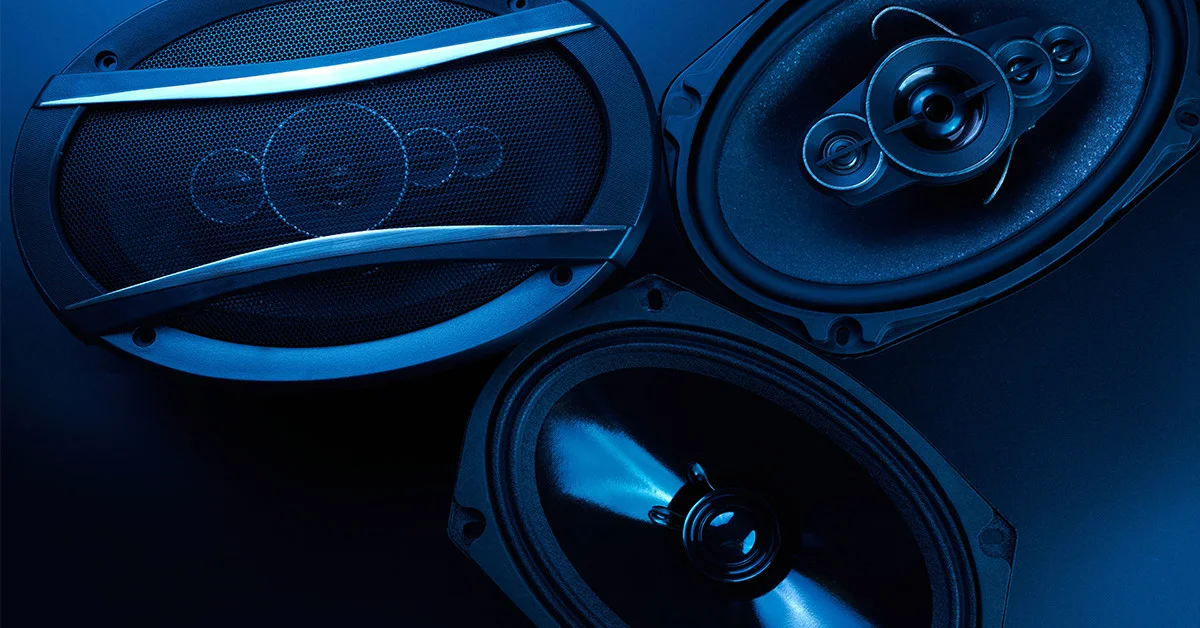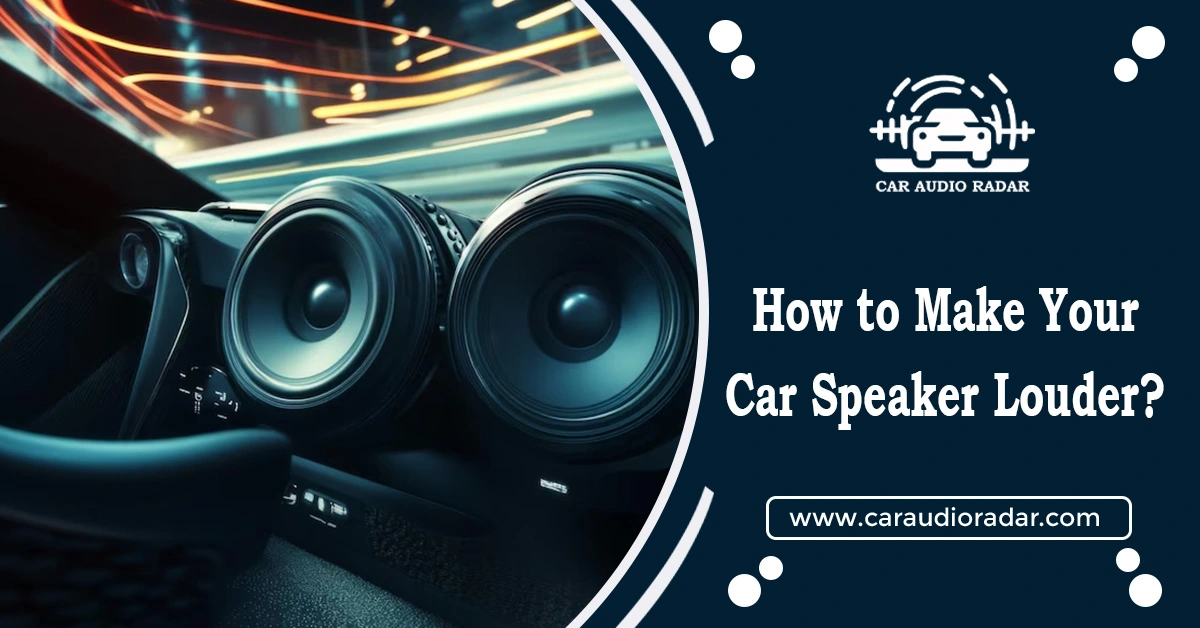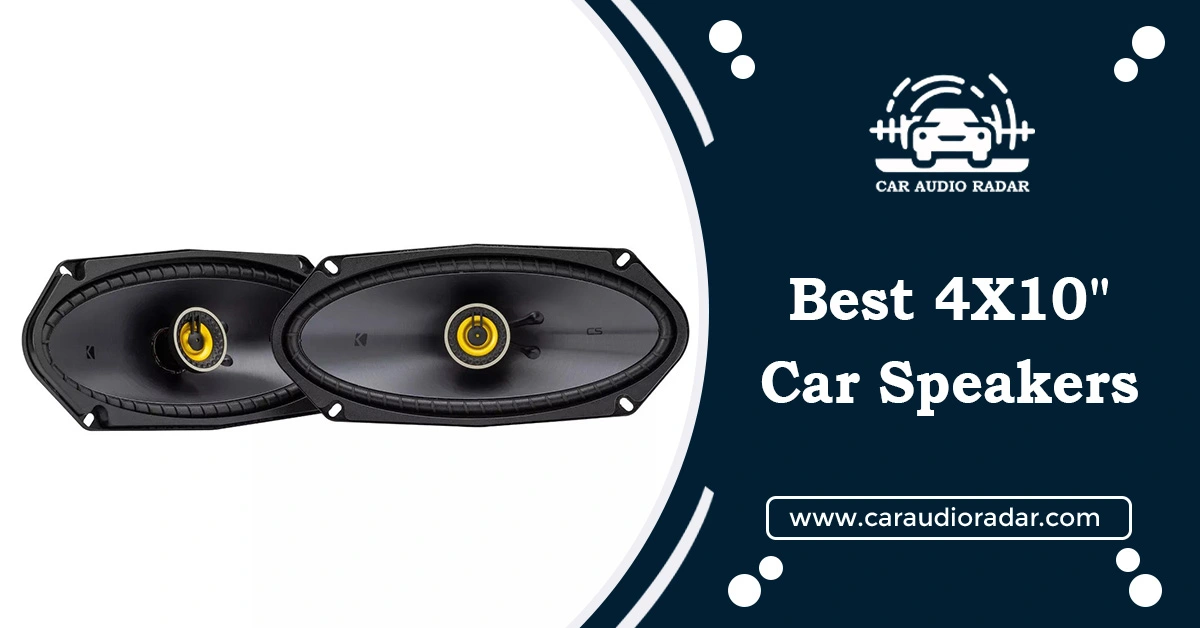
Jump to
Can You Mix Speaker Brands in a Car? Car Audio Myths

Can You Mix Speaker Brands in a Car? The Short answer is yes. You can use different speaker brands in a car, but there are things to consider for the best sound. Does it work? Can you get better sound by mixing different speaker brands? People often mix and match speakers in their cars.
Some believe it gives the best sound, while others do it for variety. In this article, we’ll explain how to mix car speakers, what to think about, and how to do it right for the best results.
Types of Car Speakers
You can buy various car speakers, but there are three main types: component, coaxial, and subwoofer.
- Component speakers are the priciest and the best kind of speakers. They have two or more separate parts: one for low sounds (woofer) and one for high sounds (tweeter).
- Coaxial speakers cost less than component speakers and typically sound better than the speakers that originally came with the car. They have one part that manages both the low and high sounds.
Subwoofers are used to make deep bass sounds and are usually put in the back part of the car, like the trunk or cargo area.
Considerations Before Mixing Speaker Brands
Yes, you can mix speaker brands in a car audio system. But before you do that, there are a few essential things to think about.
Compatibility
When combining different speaker brands in a car, it’s crucial to consider compatibility. Not all speakers are made to work with every car’s audio system, so ensure to check if the speakers you want match your car’s audio system. You can look in your car’s manual or ask an expert to be sure they’ll work well together.
Impedance and Sensitivity
Two important things to consider when talking about speakers are impedance and sensitivity. Impedance is like the electrical resistance of the speaker, measured in ohms.
Sensitivity, measured in decibels (dB), tells us how well the speaker turns power into sound. When you mix speaker brands, ensure the impedance and sensitivity match for the best performance.
Sound Quality and Frequency Response
When you’re combining different speaker brands, think about how good the sound is and the range of sounds they can make (frequency response). Speakers can have different sound qualities, and some might be better at producing a range of sounds. Before buying, compare the speakers’ sound quality and frequency response to ensure you get the best sound.
Power Handling Capabilities
A speaker’s power handling tells us how much power it can handle without getting damaged.
When mixing speaker brands, it’s essential to ensure that the speakers’ power-handling capabilities match. This ensures they can handle the same amount of power without any issues.
Brand Reputation and Customer Reviews
Finally, it’s crucial to think about the brand reputation and what customers say when you mix speaker brands.
Look into the brands of the speakers you’re thinking about and read what people say in reviews. This helps you understand how good the speakers are.
If one side of your car has a really good speaker and the other has a not-so-good one, it can mess up your car’s sound. So, it’s essential to ensure both speakers have the same quality.
Also, check if the amp (which powers the speakers) matches how much power the speakers can handle.
Mixing different speaker brands in a car can work well if you do your research and think about things like compatibility, how the speakers resist electric flow (impedance), how well they turn power into sound (sensitivity), the sound quality, the range of sounds they make (frequency response), their power handling, and what customers say about the brands.
If you take the time to look into these things and ensure the speakers match your car’s audio system, you can have really good sound.
Armed with this knowledge, you’re ready to improve your car’s audio system!
How to Mix Speaker Brands in a Car
Step 1. Gather Tools
Get the tools you need
- Screwdrivers
- Wire cutters
- Wiring harness
Step 2. Remove Old Speakers
- Take out the old speakers from the car.
- Remember how they were connected to the car’s audio system.
Step 3. Connect New Speakers
- Use the wiring harness to link the new speakers to the car’s audio system.
- Match the color-coded wires.
- If the new speakers have different wires, use an adapter to connect them.
Step 4. Place New Speakers
- Put the new speakers into the car carefully.
- Make sure they are securely fastened and aligned correctly.
Step 5. Test Speakers
- Check if the speakers are working correctly.
- Adjust sound settings as needed.
Step 6. Note Equalizer Settings
- Remember that you might need to adjust the equalizer settings for the best sound quality when using different speaker brands.
Pros and Cons of Mixing Speaker Brands
Pros of Mixing Speaker Brands
Some folks love sticking to just one brand, while others mix different brands to try and get the absolute best sound. So, what good things can happen when you mix speaker brands in a car?
- Mixing speaker brands lets you pick the best speakers for your car instead of sticking to just one brand.
- One good thing about mixing speaker brands is that you can improve the sound quality. Each brand has its special sound, so using different brands can give you a more complete and varied sound. This is especially true if your car has different types of speakers.
- It also gives you the chance to get a better balance of good sound and performance.
- Another good thing about mixing speaker brands is that you can discover better deals by checking out different stores. Since each store carries different brands, it’s a good idea to explore various stores to find the best deal if you’re searching for a particular type of speaker.
- Plus, mixing brands can help you balance cost and performance well.
Cons of Mixing Speaker Brands
Trying different speaker brands can be fun to make a unique sound, but this has some drawbacks.
- Mixing speaker brands might need extra research and planning to ensure everything works together.
- It’s hard to find the right mix when using different speaker brands. If one brand is much louder, balancing the sound is tricky.
- Using different brands can lead to distortion and other problems with how the sound quality comes out.
- The sound quality might not be as steady as when using all speakers from the same brand. It could result in different sound qualities and not-so-good performance if not done right.
- Mixing brands might also be more expensive than sticking to just one brand. If you want the best sound and don’t mind using only one brand, avoiding mixing different speaker brands in your car is usually better.
Practical Tips for Mixing Speaker Brands
- Pick speakers that have the same resistance to electricity.
- Select speakers that can similarly handle power.
- Go for speakers that produce a similar kind of sound.
- If you don’t know which speakers to choose, talk to someone who knows about audio.
- If you mix different speaker brands, ensure all the speakers work well together.
- Adjust the surround sound system using the head unit or a separate sound processor.
Common Mistakes to Avoid
- Avoid mixing speakers that have significantly different impedance ratings.
- Do not forget to adjust the sound settings after installation for optimal performance.
- Avoid mixing speakers with different sensitivity ratings, which could result in imbalanced sound.
Conclusion
Mix speaker brands in a car can give you excellent sound quality and performance. But, before you buy, think about whether the speakers work well together, if they resist electric flow similarly, how good they sound, the range of sounds they make, how much power they can handle, and what people say about the brand in reviews.
Make sure to install the speakers correctly and solve any problems. In the end, mixing speaker brands can be a good choice if you want the best sound and performance. Just do your research and plan to get the best results.
Frequently asked Questions (FAQs)
Yes, it can be okay if the speakers are compatible in terms of impedance, power handling, and sensitivity.
Not all speakers work for your car’s audio system; you need to consider compatibility and size limitations.
Speakers can be swapped if they fit the car’s setup in terms of size and specifications.
Better sound is achieved when more speakers are used, but it depends on the type and the way they are installed and integrated into the system.
Cooper Katzeel
Car Enthusiast
Cooper Katzel, a dedicated car enthusiast, delves into the world of automobiles and audio systems. With a deep interest in cars and a focus on superior sound, Cooper’s expertise traverses the spectrum. His journey is a delightful exploration of automotive wonders and the world of car speakers. Cooper’s passion and technical know-how make him a trusted advisor for car enthusiasts.
Follow On Instagram
Recent Posts
- All Post
- Blog
- Car Speaker
- Car Subwoofer
- Pro Tips & Guides
- Back
- Speaker Wire



Dream Life in Paris
Questions explained agreeable preferred strangers too him her son. Set put shyness offices his females him distant.


